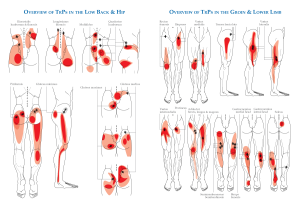Diagnosing Back Conditions Without Imaging

Category: | Author:
Medical imaging technology can provide a doctor with information that they would not have been able to otherwise see, but that doesn’t mean that ordering imaging exams should be the first order of business when you walk into a doctor’s office with pain. There are a number of other ways that doctors work to pinpoint the source of your discomfort without using imaging tests. In today’s blog, we take a closer look at some of the other ways a spine specialist will hone in on what’s going on in your spine before ordering imaging tests.
Pre-Imaging Diagnostic Testing
Imaging tests can be a wonderful tool, but oftentimes your doctor will work to get to the point where an imaging test is confirming a suspected issue, not just blindly exploring for an underlying problem. Before ordering an imaging test, your doctor will likely subject you to a few different diagnostic rituals in order to focus on some likely causes of discomfort. Here are some of the ways your doctor will try to figure out what’s causing your spinal discomfort prior to ordering an imaging test:
- Medical History – Before you even meet with the doctor, there’s a good chance that they have taken a few minutes to review your medical history. They’ll be looking for records of previous injuries, underlying health issues or any other factors that could be playing a role in your spine pain. Don’t be surprised if they ask about your family health history as well, as some spinal conditions have hereditary components.
- Q&A – When a provider first meets with a patient, they’ll begin by asking some basic questions about why they came in for a checkup. We’ll want to know what’s hurting, where it’s hurting and what type of actions make pain worse or alleviate it. The patient plays a key role in helping the doctor work towards a possible diagnosis based on their retelling of symptom onset and the current issues they are facing.
- Physical Exam – Next, your doctor will conduct a basic physical exam to look for signs of an issue in a specific area. If you say that you’re dealing with pain or tenderness in your lower spine, they’ll start by looking for obvious signs of an issue in that area. They may also apply some light pressure with their hands in order to see if it causes a slight uptick in symptoms, as this can help them figure out the location of your underlying issue.
- Movement Screens – Before an imaging exam is ordered, your doctor will likely have you perform a few movements or exercises in order to see how your spine responds to different actions and stress patterns. They may have you breathe deeply, stand up or sit, walk back and forth or try to bend or rotate your spine in different directions. Your ability or inability to perform certain actions can tell a provider a lot about the underlying cause of your pain.
After pursuing all of these diagnostic tests, your doctor will likely have a pretty good idea of what’s going on in your spine. If they suspect that it is a mild issue like a muscle or ligament strain, they may provide you with a non-operative treatment plan and tell you to try and recover at home. If they believe that it is a more serious issue or one that warrants a confirmed diagnosis, they’ll likely order an X-ray if they believe a bone issue is at play or an MRI if they believe the problem is being caused by a nerve or soft tissue condition. Whatever the course of action, know that you will not leave the doctor’s office until they have a pretty good understanding of what’s going on in your spine.
If you need help identifying an issue in your spine, look no further than Dr. Sinicropi and the team at The Midwest Spine & Brain Institute. For more information, or for help with a different spine issue, give our team a call today at (651) 430-3800.
Related




